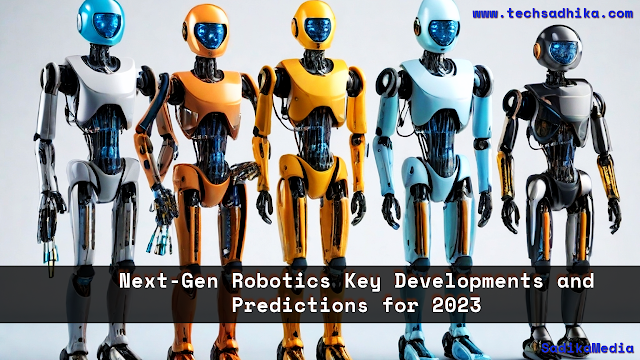Next-Gen Robotics Key Developments and Predictions for 2023
Next-Gen Robotics Key Developments and Predictions for 2023
The realm of robotics has been redefining industries, from healthcare to agriculture, manufacturing to logistics, and beyond. In recent years, advancements in artificial intelligence, machine learning, sensor technologies, and materials science have accelerated the evolution of robotics. As we look forward to 2023, several key developments are set to take center stage in reshaping the future of robotics.
1. Autonomous Robots: Autonomous robots, capable of performing tasks with minimal human intervention, will become even more prevalent. With improved AI and machine learning algorithms, these robots will be able to navigate complex environments, make decisions, and adapt to changes. Industries like agriculture, mining, and warehousing will see a significant increase in the use of autonomous robots for efficiency and safety.
2. Collaborative Robots (Cobots): Cobots are designed to work alongside humans, enhancing human capabilities rather than replacing them. In 2023, we can expect to see cobots becoming more sophisticated, offering high precision, and improved safety features. They will find applications in numerous sectors, particularly in manufacturing and healthcare.
3. Soft Robotics: Soft robotics, inspired by biological systems, are making strides in areas where traditional robots struggle, such as delicate tasks or unpredictable environments. In 2023, advancements in materials science will lead to more robust, flexible, and adaptable soft robots.
4. Humanoid Robots: The development of humanoid robots will continue to advance, with robotics getting closer to imitating human-like movements and interactions. Enhanced AI capabilities will also allow these robots to understand and respond to human emotions, further blurring the line between humans and machines.
5. Robotic Process Automation (RPA): RPA will continue to grow, automating mundane and repetitive tasks, thus freeing up human workers for more strategic roles. With more intelligent algorithms, RPA will be able to handle more complex tasks, improving productivity across various industries.
6. Medical Robotics: The healthcare industry will see a surge in the use of robots for surgery, rehabilitation, and patient care. Robots will enable more precise surgeries, personalized rehabilitation programs, and efficient patient monitoring systems.
7. AI and Machine Learning: AI and machine learning will continue to be integral to the development of robotics. Robots will become more intelligent, capable of learning from their experiences and adapting their behavior accordingly, leading to more efficient and autonomous systems.
As we move toward 2023, the line between science fiction and reality will continue to blur. The robots of the future will be more intelligent, more autonomous, and more integrated into our daily lives. However, these advancements also bring new challenges, particularly in terms of ethics, privacy, and security. It's crucial that as we continue to innovate, we also consider the potential implications and ensure the responsible development and use of robotic technologies.










